Selling a business involves more than just adding up assets and liabilities. One of the most critical aspects in determining the final sale price is the ‘business goodwill’. In this guide, we will walk you through the concept of goodwill, why it matters, and how to calculate it.
You’ll also learn about methods to assess goodwill and common pitfalls to avoid so you can ensure your business sells for the right price.
What is business goodwill?
At its core, business goodwill is an intangible asset that represents the value of a business beyond its physical assets. For example, if your business were an iceberg, the goodwill would be what lies beneath the water, meaning an inherent and important value that cannot be seen at first glance but still exists.
Therefore, while your tangible assets may include equipment, stock, and real property, Goodwill reflects the value of intangible assets, such as:
- reputation;
- customer base and loyalty;
- brand recognition;
- physical location;
- the continuing success of your business; and
- patents, trademarks, and logos.
Importance of goodwill in selling your business
Goodwill is something you can’t touch, but it can greatly impact how much a buyer is willing to pay for your business. It’s a determining factor that elevates your business’ market value above the sum of its tangible assets.
A high goodwill value indicates strong competitive advantages and market positioning, and in many acquisitions, goodwill makes up a large portion of the purchase price over book value.
For example, two businesses with identical assets may sell for vastly different prices depending on their goodwill. This is because goodwill reflects factors like customer trust and brand recognition—intangible elements that often take years to build.
3 helpful goodwill calculation methods
The type of business you have, your preferences, and your buyer’s preferences will influence the valuation method you use to calculate the value of your business’s goodwill.
A basic method for calculating the overall business value:
The value of your physical (tangible) assets + the value of your business’s goodwill (intangible assets) – any liabilities.
However, you can use a combination of different methods, and you may even need to negotiate with a prospective buyer about which method you should use. Plus, at the end of the day, the value of your business’s goodwill is what the marketplace or buyer is willing to pay.
Let’s explore three other common approaches for goodwill calculation:
1. The return on investment (ROI) method
This method calculates goodwill based on the return a buyer expects from their investment. It evaluates the future profit potential of the business and compares it to the buyer’s required rate of return. The difference between the expected profit and the actual assets is deemed the goodwill.
The formula is: ROI = (net annual profit/ideal selling price) x 100
For example, you have a selling price of $100,000 in mind, and your business’s net profit was $25,000 last financial year.
The buyer ROI would be (25,000/100,000) x 100 = 25%
This helps you assess whether the goodwill you have attributed will yield the ROI your buyer is expecting.
2. The cost of starting a business from scratch method
This method is handy if the price of your business comes out looking like a smart investment compared to starting a similar one from scratch. Add up the cost of starting your business again from scratch in today’s market and compare that total to the cost of all your current assets.
Presenting these comparable costs to a prospective buyer can be very persuasive.
3. The business asset valuation method
This method focuses on the actual assets of the business, comparing the total value of tangible and intangible assets. To calculate the value of your intangible assets, you will need to:
a. Make a list
Like most jobs, start with taking stock of what you have to offer. List all your business’s intangible assets, including, but not limited to, the list of common intangible assets listed above.
b. Determine fair market values
This step can get a bit tricky, but a good way to estimate the value of intangible assets is by researching industry benchmarks, looking at past sales records, and exploring current market conditions in your industry.
A registered accountant, business broker or advisor would have access to a wide range of industry data to help with this valuation process. Plus, a professional may also have clients who might be interested in buying your business.
c. Decide on the value of YOUR intangible assets
Once you have attributed a fair market value to each of your intangible assets, consider the unique features of your specific assets and decide whether each asset is worth more or less. Add up each adjusted value, and the total number will be the value of your business’s goodwill.
Key factors that influence goodwill value
Several factors can impact your business’s goodwill value; focusing on these areas before selling can maximise your goodwill value. The most important ones include:
- Customer loyalty: a business with a strong and loyal customer base tends to have higher goodwill.
- Brand reputation: a strong brand reputation establishes trust and credibility, establishing a solid market presence that is more valuable.
- Market conditions: having a competitive advantage in certain markets can enhance goodwill value, as it indicates the business’s ability to sustain profitability and fend off competition in the long term.
- Intellectual Property: proprietary technology, patents, and trademarks contribute to goodwill by providing competitive advantages that are difficult for others to replicate.
- Supplier contracts: favourable supplier agreements or long-term contracts can also enhance goodwill.
Common mistakes in goodwill calculation
Due to the intangible factors that goodwill includes, calculating it can be tricky, and it’s easy to make mistakes. Here are a few common pitfalls:
- Overestimating brand value: not every business has a brand that warrants high goodwill. Be realistic about your brand’s market position, and don’t assume your business has goodwill simply because it’s established. Your earnings performance needs to justify the intangible value.
- Ignoring market trends: failing to account for changing market conditions can lead to inflated goodwill estimates.
- Improper application of valuation multiples: using incorrect multiples or applying them to the wrong financial metrics can affect the final valuation of goodwill, preventing you from achieving the best possible price.
- Not factoring in customer churn: a high customer churn rate can dramatically reduce goodwill value.
Accurate goodwill calculation is key to a fair business valuation. Ensuring that all variables are taken into account and seeking expert advice from business lawyers can prevent costly mistakes.
Conclusion and final tips for selling your business
When selling your business, you want to show a buyer that your company’s valuation of tangible and intangible assets will deliver future maintainable profits. You can do this by showing:
- long-term customer contracts;
- a healthy sales pipeline;
- competent, well-trained and happy staff;
- a comprehensive business strategy and management structure;
- efficient inbuilt systems and processes, and
- a strong and well-executed brand.
Accurate goodwill calculation is crucial to ensuring you receive the right price for your business. By understanding the factors that influence goodwill and using reliable valuation methods, you can negotiate confidently and maximise your sale price.
If you’re planning to sell your business or need help with business disputes, contact H+A Legal for expert advice. Our commercial dispute services can guide you through the complexities of business valuations, negotiations, and more. Let us help you achieve the best commercial outcome for your business.



